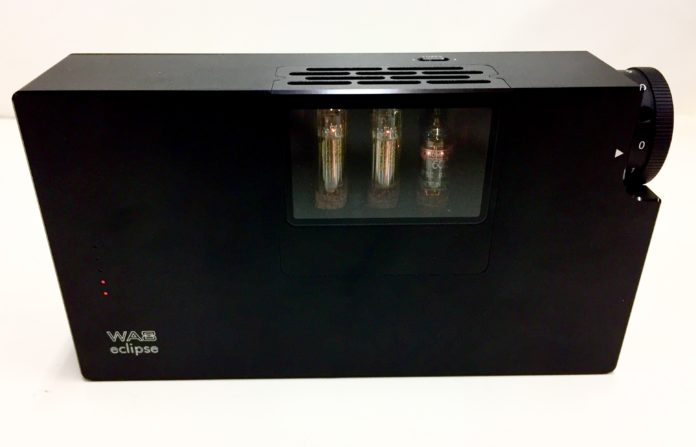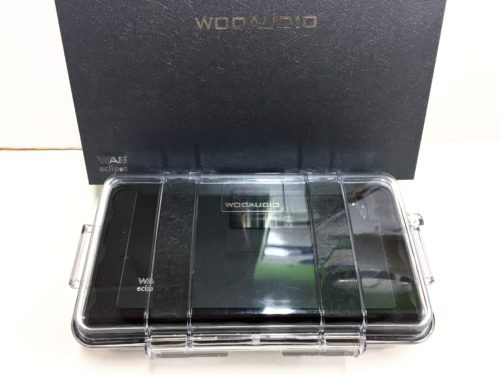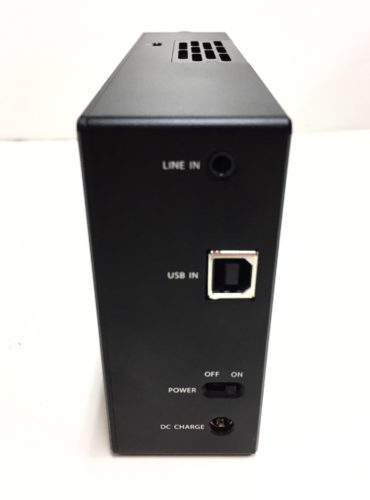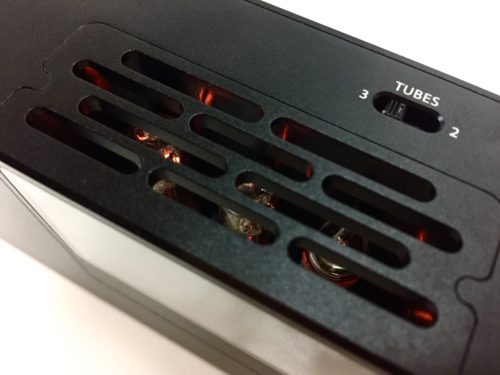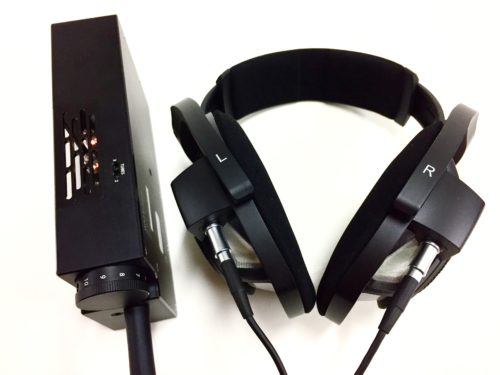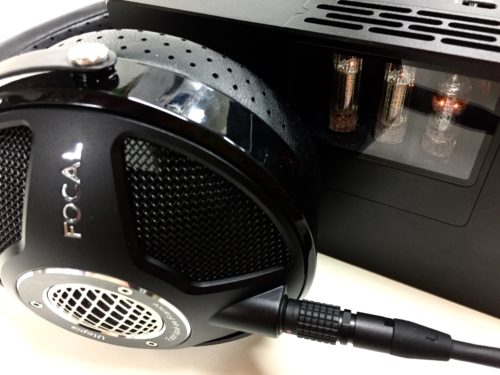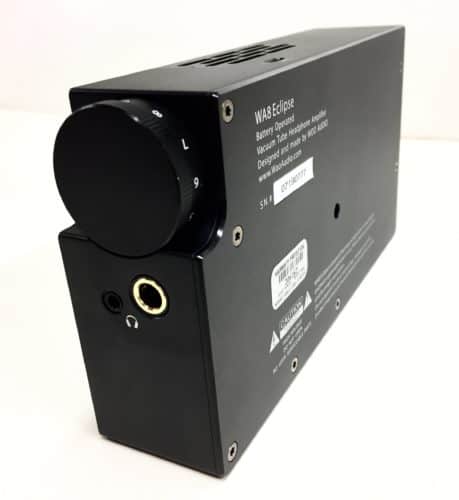I like tube amps, so it goes without saying that I’ve been aware of Woo Audio for a while. They’re giants in the world of tube amps, releasing such classic behemoths as the powerful WA5 and the stately WA6. But it was the Woo WA8 Eclipse that was especially interesting to me – a tube amp designed for portability, complete with a showcase of the tiny, delicate glowing tubes.
And upon stopping by the Woo Audio exhibit at CanJam NYC, I was finally spurred on to do a review of the WA8 Eclipse. So here it is!
In the Box
- WA8 amplifier
- Charging cable w/ AC adapter
- USB cable
- Pelican case
- User manual
Build and Appearance
The Woo WA8 Eclipse is diminutive but hefty, and like many other Woo Audio products, it’s strikingly beautiful. The visual appeal of those three tiny tubes glowing through the gorilla glass opening is as gorgeous as intended. Of course, tube amp naysayers may criticize Woo’s visuals as pretentious or flashy. I can see that perspective, too – as much as the WA8 looks like an audiophile’s dream come true, visual spectacle can also conceal an inferior product.
Well, having listened to the WA8, I can confirm that this is not the case.
Everything about the WA8 seems well-put-together, but as a tube amp, there are some quirks when it comes to operation. Woo’s included user manual is full of little tidbits about what users can and can’t do – for example, you shouldn’t plug in or unplug your headphones without first setting the volume to 0. All of this is to ensure that your product lasts as long as possible.
As a Class-A tube amp, the WA8 does get toasty, but not to the level of some other tube amps I’ve tried. Even after running it for a few hours, it wasn’t so hot that I couldn’t touch it. But Woo Audio still warns not to let the tube vent get covered for safety reasons, and so it advises users not to use it while stashed away in a bag.
But if you want a tube amplifier that you can ferry back and forth between the office and the home, I can think of few solutions better than the Woo WA8.
(On their website, Woo even includes a picture of the WA8 sitting in a car next to a pair of HD800’s. As a California native, I’ve driven cars with exceptionally bad sound systems, so I understand the temptation. But for ethical and legal reasons, I’m obliged to say – please don’t wear headphones while driving.)
Performance
At $1799, one would expect great performance from the Woo WA8 Eclipse. My experience, though, suggests that you have to pay a bit more for equally resolving tube amps. After all, tube technology can be a bit finnicky, and requires high-quality components and workmanship. So I pitted it against the closest-priced solid-state DAC/Amp I had on hand, the slightly more diminutive $599 iFi Micro iDSD Black Label. And, well, if the Black Label sounded better, that would be pretty condemning.
First thing to notice is that there’s no hiss, no hum, no nothing – the unit is dead silent, even when turned up to max volume. At $1800, this should be a given, but it just means that it passes its first test.
Sennheiser HD800S
With its high impedance rating of 300 Ohms and a kind of analytical sound signature that some find “unmusical,” the HD800S is a perfect fit for a tube amp. And given the HD800S’s prominent position on Woo’s website, the amp’s designers probably had the same thought. I’m not the betting type, but if I were, I’d wager that the HD800S factored heavily into the WA8’s design process.
Besides that, the HD800S makes for a good headphone for amp evaluation because it’s extremely detailed, so any loss of detail would be clearly audible.
On the detail front, the WA8 performs well, retaining almost all of the little details and spatial cues of the Black Label. I did find that the WA8 fell behind slightly in rendering “mouth noises” and such – there was a slight loss of speed in the mid-to-upper treble that was just barely noticeable in close-mic’d vocal recordings. Something like this is very typical for a pure tube amp.
Where the WA8 does extremely well is exactly where you’d expect – musicality. With a solid-state amp like the Black Label, the HD800S has a sort of “hands-off” approach to music – listening to Led Zeppelin IV, for example, I’m struck by a sense of distance between me and the music. Robert Plant is just a little bit too far in the distance, etc. With the WA8, the upper midrange moves just a bit forward, and instruments start sidling up to me. The HD800S is still great for analysis – I can still hear exactly where everything is, and there’s no artificial distortion of the soundstage. But if I choose, I can sit back and enjoy the music. With the WA8, it becomes driving, and tactile, and real.
This is something I’ve noticed with tube amps: details aren’t hidden, but they move just a bit further back, trading “obviousness” for tactility and weight. With the WA8, you get that tactility, with very minimal sacrifice in terms of detail.
Focal Utopia
Wanting to see how the WA8 would handle a headphone that doesn’t need the extra musicality, I reached for the Focal Utopia. This is one of those headphones that would sound at least somewhat dynamic and exciting from the most boring amplifier in the world. I was curious, then, to see if the “extra musicality” of the WA8 would be overkill.
I started out by listening to a little bit of Pierre Barouh’s “L’Autre Rive” through the Black Label (hey, if I’m gonna use French headphones, I gotta play French music). Don’t ask me why I started with the Black Label – I don’t know myself. But I’m glad that I did, because the increase in bass from switching to the WA8 was palpable. I was floored by how much more impactful the bass became – thunderous, tactile.
“Maybe it’s being affected by a high output impedance?” I thought, knowing that the Utopia’s relatively low 80 Ohm impedance rating makes it less-than-ideal for a tube amp pairing. Deep down, I knew it didn’t matter – I was enthralled nonetheless. (By the way, any Utopia owners who haven’t listened to this whole album – “Le Pollen” by Pierre Barouh – are doing themselves a disservice.)
The high end gets a little less pronounced with the WA8, certainly, and things sound a bit more smoothed-over. But, to my ears, there’s not much loss of detail here, if any. If there is, I don’t care – I’m just enjoying the hell out of the music. What a thrilling combination.
In Conclusion
The Woo WA8 walks a narrow line between portability and performance, musicality and detail, form and function – and it manages. Oh, it manages. If you’re looking for a musical, warm-sounding, portable amp that looks quite nice, and you have the $1800 in hard cash to spare, the WA8 is worth your attention.
As with many things, you can find it at Audio46.
As a disclaimer, MajorHifi may receive commissions from retail offers.
MAJORHIFI may receive commissions from retail offers.


